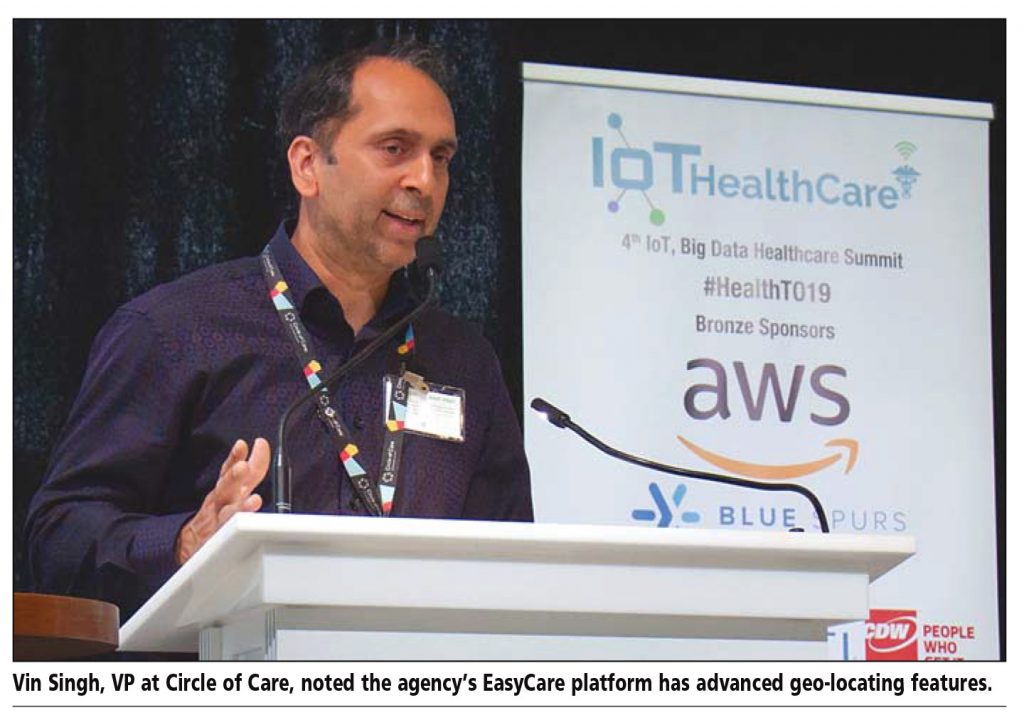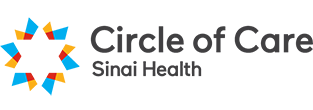The following article was published in Vol 24, No 6 of Canadian Healthcare Technology, Canada’s magazine for managers and users of information systems in healthcare. It is shared with permission from the editor.

Toronto-based Circle of Care agency advances home care technology
BY JERRY ZEIDENBERG
TORONTO – Circle of Care, an affiliate of Sinai Health System, certainly punches above its weight when it comes to innovation and effectiveness of its information technology. The Toronto-based home care agency, which serves clients at home and in residential care across four regional LHINS in Ontario – has developed a high-functioning electronic records system that it started offering to other agencies last year.
The solution, a new and improved version of its EasyCare™ platform, has helped make Circle of Care more efficient and effective. For example, it’s challenging to monitor whether a mobile workforce, spanning large geographies, are delivering services when and where they’re supposed to be.
The GPS on a mobile phone can supposedly tell you if a person is at a certain address, and this is what most home care organizations have traditionally used to verify that a nurse or support worker has visited a client. However, the geo-location capabilities of phones aren’t that granular. While they can tell you whether your caregiver is at a certain address, they can’t tell you, for example, whether he or she is in the ground floor lobby of an apartment building or on the 12th floor, where the client lives.
To resolve this issue, Circle of Care started installing beacons – small sensors that use Bluetooth to communicate with phones – in the apartments and homes of its clients. The beacons connect with phones and are able to confirm whether the visiting care worker has entered a room, and for how long. That data is uploaded in real-time, allowing EasyCare to compare the geo-location to beacon data.
At the outset, when Circle of Care compared the geo-location data of workers’ phones with the information collected by the beacons, several discrepancies were noted. In other words, some care workers weren’t visiting when or where they said they were. Not only were these care workers being paid for time they hadn’t spent with clients, the clients weren’t receiving the care they needed – a significant safety issue.
Vin Singh, Vice President of Information Systems and Technology at Circle of Care, and Carey Lucki, CEO of Circle of Care, and a VP with Sinai Health, spoke about the organization’s commitment to improving quality through technology at the annual IoT Big Data Healthcare Summit, held in Toronto in June.
The use of beacon technology has helped lift the veil of mystery about whether visits took place, commented Lucki. “It has become particularly helpful in situations where clients won’t call to report that they didn’t receive the care they were supposed to get. Often they are afraid to call for fear of offending their caregivers, or they may be physically or mentally unable to make the call. Beacon technology ensures that we are providing safe, accountable care and that our clients remain our top priority.”
The use of beacon technology at Circle of Care is just one example of advances in technology that are occurring at the organization. In 2016, Lucki observed, the drive to update and improve the IT infrastructure first started. “IT became a strategic priority and investments were made in the existing EasyCare platform to greatly extend its capabilities. Following that, in 2017, we made an investment in mobile apps for caregivers and clients. And now we are in the process of creating and trialling an app for our 1,000-plus volunteers.”
The mobile apps continue to evolve and adapt to the needs of clients, their caregivers and staff. The worker app allows PSWs to confirm arrival and departure, the delivery of various tasks (care plans) and it supports electronic signatures. In addition, workers can order supplies, request time off and securely receive messages. By using beacons, geo-locating on phones and electronic signatures, the agency now has a “three-factor” verification process – important features that are required as part of auditing for some of Circle of Care’s funders.
However, the upgrade to its in-house EasyCare platform has been most exciting for the organization. Singh outlined the abilities of Circle of Care’s fully electronic system. “It offers scheduling, assessments, case notes, billing and care planning for patients. On the staff side, it has attendance management, reporting, supply management and secure messaging.”
EasyCare is also able to connect to other applications such as CHRIS, the provincial continuing-care reporting system, as well as IAR and to Trapeze, for arranging transportation services. It even has single sign-on to Connecting Ontario, the provincial viewer, so authorized staff can see a patient’s charts when there have been hospital visits or test results.
Singh described how Circle of Care built risk management and quality improvement features into EasyCare. “We data-mined a year’s worth of case notes and looked for important keywords, like “fall” and “abuse”. He observed that these are serious issues – falls for seniors, and the risk of harm for caregivers when clients are abusive. Even if these items were logged as notes, in the past, they haven’t always been reported or followed-up on. Now, however, the case notes are automatically scored, and highlighted issues are reported to management. They’re then turned into action items – case managers are assigned to look into the problems and to fix or mitigate them.


